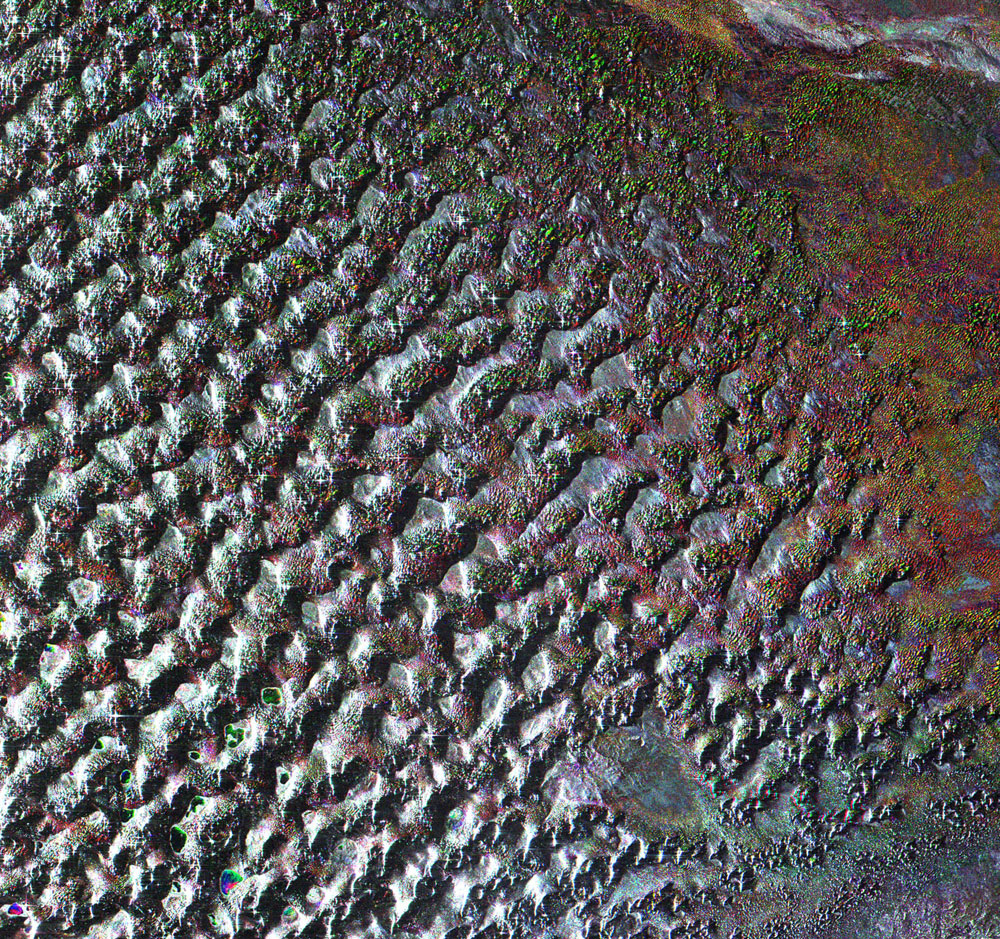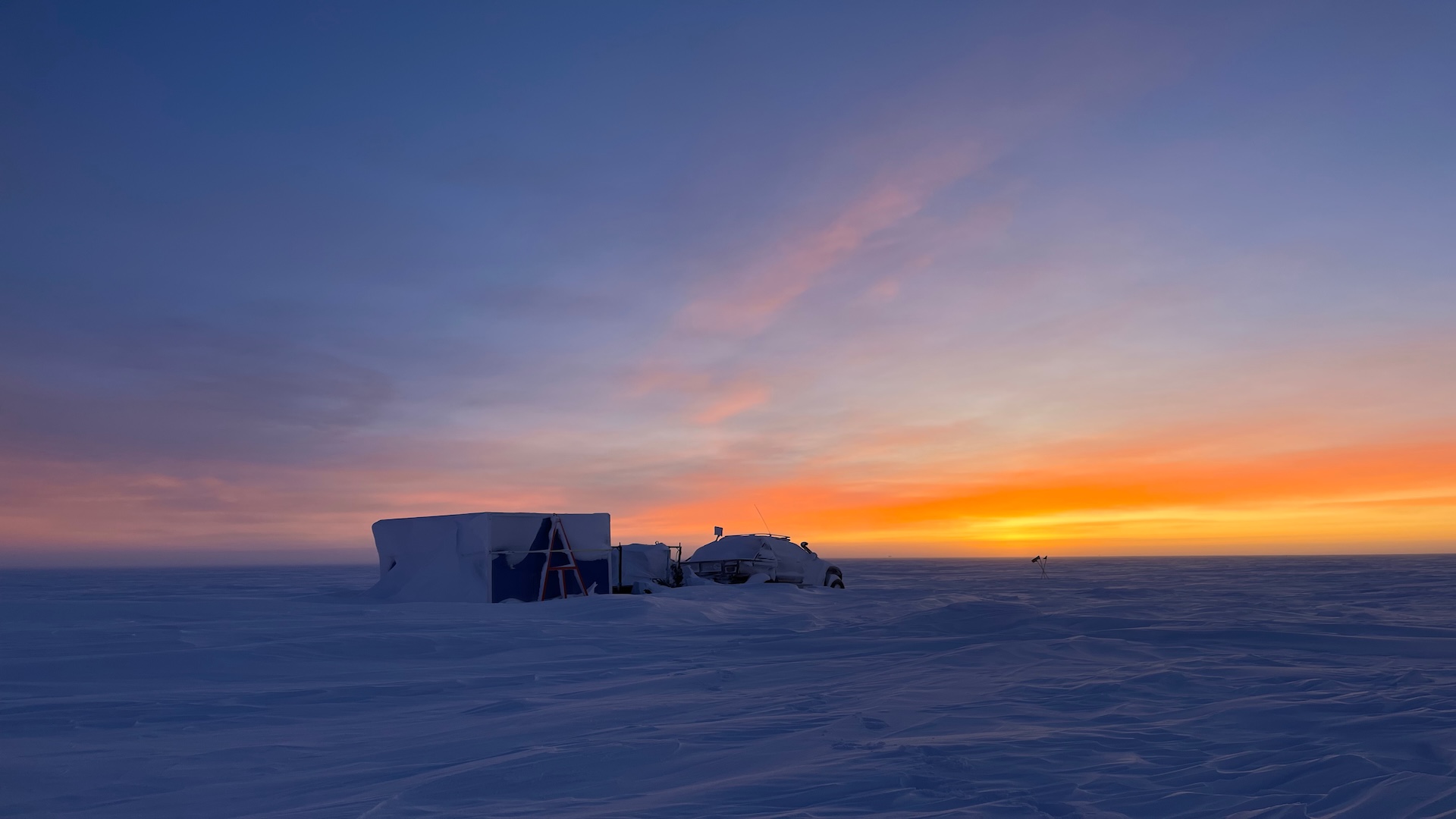Earth as Art: A Rocky Desert


Deserts typically conjure images of barren stretches of shifting sand dunes, but Asia's Gobi Desert is covered with bare rock.
The Gobi, which is about 1,600 kilometers (990 miles) in extent from east to west and about 1,000 km (620 miles) from north to south, has a total area of 1,300,000 square km (800,000 square miles), making it the largest desert in Asia and the fourth largest in the world. The desert stretches across vast areas of the Mongolian People's Republic and the Inner Mongolian Autonomous Region of China.
This image of the Gobi, made by the Envisat satellite's Advanced Synthetic Aperture Radar in August 2009, shows the terrain of the desert. The Gobi is formed by a series of small basins within a larger basin rimmed by upland. The basin floors are unusually flat and level, and are formed of a desert pavement of small gravel atop granite or metamorphic rock, according to a European Space Agency statement.
The name "Gobi" means "waterless place" in Mongolian. The desert receives 200 to 250 millimeters (8 to 10 inches) of rain along the northern and eastern edges, while its southeastern portion is completely waterless.
Small lakes that are kept filled by groundwater are visible in the image dotting the landscape. Archaeological evidence shows the lakes have existed for a very long time, with Stone Age dwellers living along their borders, the ESA statement said.
Numerous important fossils have been found in the Gobi Desert , including the first dinosaur eggs.
Get the world’s most fascinating discoveries delivered straight to your inbox.



